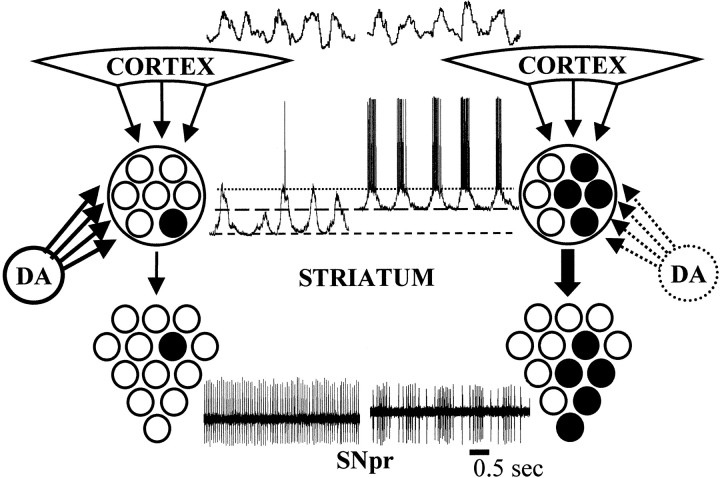Fig. 8.
Postulated mechanism for the generation of rhythmic modulations of firing rate in the basal ganglia output nuclei. The ∼1 Hz cortical rhythm is propagated to the striatum, where it produces a rhythmic fluctuation in the membrane potential of striatal projection neurons. During the depolarizing phase of the membrane potential fluctuation, striatal neurons are very close to threshold, but they only rarely discharge action potentials when the nigrostriatal system is intact (left). In animals having chronic nigrostriatal lesions, striatal projection neurons show a more depolarized up state and an increased firing probability (right). These changes may allow transmission of a coarse representation of the cortical rhythm to the striatal target nuclei.

